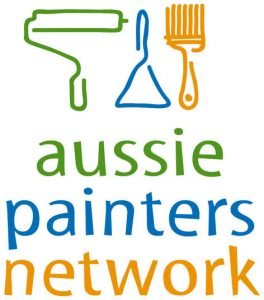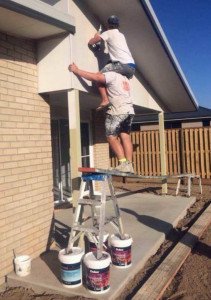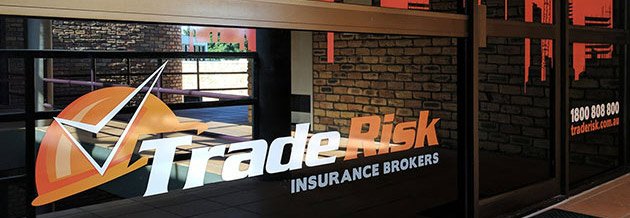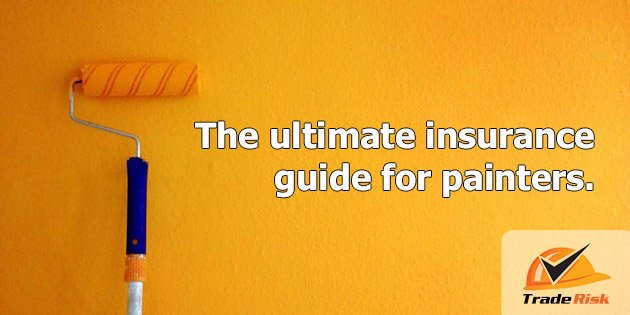Here at Trade Risk we specialise in painters insurance. More specifically, business insurance for painters and decorators.
We are the only insurance firm recommended and endorsed by the Aussie Painters Network, and we believe we offer the best pricing and service for painters throughout Australia.
If you only need public liability insurance we can provide you with an instant quote online, and you can buy your policy online and have your certificate within minutes.
If you have more complex insurance needs or would just prefer to speak to a real person, you can call us on 1800 808 800 or complete our contact form.
As the experts for painters we have put together our ultimate guide on painters insurance. There’s a huge amount of content, but you can use the links below to jump straight to the areas you’re interested in.
Painters Insurance Types
- Public Liability
- Income Protection
- Tool Insurance
- Commercial Vehicle Insurance
- Business Insurance Pack
Common Questions From Painters
- Is there a height limit on my policy?
- Am I covered for overspray?
- Do I need my own insurance if subcontracting to another painter?
- What affects the cost of painters insurance?
Painters Insurance Types
There are three main forms of insurance that are commonly required by painters, and these are public liability, income protection and tool insurance.
Outside of the big three there are many other forms of business insurance, and whether or not you need them will depend on the nature of your business.
We’ll now go into more detail on each of these important forms of painters insurance.
Public Liability
Most painters know they should have public liability insurance, but do you know what it actually covers?
Essentially it covers you if you mess up and someone else suffers a loss as a result.
Speaking more formally, the policy will respond in the event that a third party suffers property damage or personal injury as a result of your negligence.
The easiest way to understand how public liability insurance can help protect you as a painter is to look at some claim examples.
Property Damage
The most common public liability claims are for property damage.
If you spill a tin of paint onto carpet or similar, and the carpet needs to be replaced, the policy can cover the costs of the clean-up and replacement.
If you break a window or scratch a car whilst carrying your ladders, again your policy can cover the costs involved in repairing the damage.
Personal Injury
Claims for personal injury are less common, but they can be far more severe.
Say you’ve spilt paint on a tiled floor, then left to find something to clean it up with, and in the meantime the homeowner walks past and slips on the paint.
If they suffer injuries as a result, you may be found responsible for any medical costs and financial loss they suffer.
Such claims can run into the hundreds of thousands, but this is the type of situation that your public liability policy can respond to.
Third Parties
It’s important to remember that public liability insurance is all about losses suffered by third parties.
It does not cover damage to your own property, or injuries suffered by you or your staff.
There are other forms of insurance to cover these risks, and your insurance broker can advise you on which policies are right for you.
For more information or a quote please visit our public liability page.
Income Protection
If you’re a subcontractor or self-employed painter, you’ll know that if you can’t work you can’t make any money.
And with no sick leave, and potentially no workers compensation (depending on which state you’re in) you could find yourself in serious financial trouble.
Thankfully the risk can be managed through income protection insurance. And perhaps not acting like the two blokes in the photo!
Income protection can replace up to 75% of a painter’s income for a period of time if they are unable to work due to injury or illness.
At Trade Risk we have our own in-house financial adviser who specialises in income protection for tradies and painters. We can help you over the phone, online or even in person if you’re local to our Brisbane office.
Along with income protection, we can increase your personal coverage with policies such as life insurance, trauma and TPD insurance. All three of these can be vital for a painter, especially once you have added responsibilities such as a mortgage and dependant children.
For more information or a quote please visit our income protection page, or you can jump straight to our income protection quote page. You can always call us too on 1800 808 800.
Tool Insurance
How would you feel if you went to your ute one morning to find that your ladders, trestles, spray guns and equipment had been stolen?
After the initial shock, the first two things you’ll think of will be the cost of replacing everything and how you’re going to keep working without your gear.
Tool insurance is a very popular option for painters, and can cover your equipment against theft, fire and storm damage and damage caused in a vehicle accident.
For more information or a quote please visit our tool insurance page.
Commercial Motor Insurance
All painters and tradies will know the important of insuring their ute or van, but we find that many choose to go with a ‘retail’ type of policy.
What we mean by that is a standard car insurance policy that you’d typically see advertised on TV and sold by the big household name insurance companies.
These are perfectly fine for the average person insuring their personal vehicle, but they’re not always up to scratch for a vehicle use for business.
Why is that? It’s all about the limits. Even if you tell your insurance company that the car is used for business purposes, a standard policy will still be quite limited in areas that are important to painters.
Here’s a couple of quick examples between the wording of a popular retail car insurance policy and a proper commercial vehicle policy that we use.
Hire car:
The retail policy provides a ‘compact’ car as a hire vehicle, whilst the commercial policy provides a ‘similar’ vehicle to the one that is insured.
As a painter, a compact car isn’t going to be much use when you need to cart ladders and trestles around the place. But a similar vehicle to the one that was stolen or damaged is going to be far more useful to you.
Trailer:
Both the retail and the commercial policy include limited cover for a trailer, however the retail policy only covers a single-axle trailer, whilst the commercial policy will cover any trailer with a GVM up to 2 tonnes.
Financial Gap:
If your ute or van is financed, in the event of a total loss (i.e. written off or stolen and not recovered) the retail policy will pay out the financed amount up to the sum insured.
The commercial policy will do the same, but also covers a gap of up to 20% if there is a shortfall between the insured amount and the amount outstanding on your finance.
This is a huge benefit for business owners who typically finance their vehicle. We have seen first-hand how this benefit can save tradespeople many thousands of dollars.
Please note: The above comments relate to only one of the commercial motor policies that we use. If you are taking out motor insurance with us, you should ask which benefits your specific policy includes. The policies we compared were provided by AAMI and Insuret.
Business Insurance Pack
If your painting business has grown to a certain size you could find yourself moving into your own premises.
Whether you own the premises or are renting, you’ll need some additional form of insurance. This is where you typically move into the ‘business pack’ category.
As well as bundling in your public liability, tools and vehicles, cover can also be provided for contents and stock at your premises, and the building itself if you’re the owner.
This is where Trade Risk can provide a major hand. Whilst we’re great at providing quick and inexpensive cover for the basics, our team of qualified insurance brokers are exceptional at dealing with larger and more complex insurance packages.
That’s the benefit of using insurance brokers over call centres.
Common insurance questions from painters
At Trade Risk we insure thousands of tradies, including plenty of painters.
We get a lot of questions each week, so we’re going to answer three of the most common questions we receive from painters regarding public liability insurance.
Please keep in mind these answers are quite general in nature, and if you have questions about your specific situation we recommend contacting us or your broker.
Is there a height limit on my policy?
This will vary from one policy to the next, but it’s fair to say that the majority of public liability policies will have a height limit.
This is especially true of the policies issued by the mainstream insurers.
Many standard policies will have a height limit of 10m or 15m for external work. This means if you’re working higher than this, your policy will not cover you.
Some of the more specialist providers do have policies to cover greater heights, which in most case will simply be in the form of no height limit.
As a broker, at Trade Risk we deal with multiple insurers, so the height limits will depend on which painters insurance policy we recommend to you.
We certainly have access to policies with no height limits for painters, and the cost is not a great deal more than policies with a height limit.
The best option is to simply tell your broker if you expect to be working at heights greater than 10m and they will ensure the correct policy is recommended to you.
Am I covered for overspray?
Overspray or spray drift can be a major issue for painters using spray guns as part of their business.
As with height limits, coverage for overspray varies depending on the public liability policy you have.
Generally, it’s not that claims for overspray are specifically excluded, but rather that the activity of using spray guns is excluded.
So if you are doing any spraying, you simply need to let your broker know so that they can ensure you have the right policy.
At Trade Risk our public liability policies for painters will generally cover spraying, but again, it’s always worth letting us know to be sure.
In terms of claiming for damage caused by overspray, it’s important to ensure it wasn’t recklessness that caused the issue.
If you’ve tried to do the right thing but still ended up with an overspray issue, you wouldn’t expect to have any issues with your claim.
But if you were spraying outside on a windy day, and the car right next to you ended up covered in spray, the insurer may see that as being reckless rather than just negligent.
Do I need my own insurance if I’m subcontracting to another painter?
If you’re subcontracting to another painter who has his or her own insurance, don’t count on being covered by it yourself.
In most cases public liability policies cover only the insured name and their employees, not subcontractors.
Some policies can be extended to cover subcontractors, but the cost is generally a lot higher and there is little incentive for the contractor to take this option.
With the cost of public liability insurance for a single-worker painting business being less than $400 a year, it’s certainly worth having your own cover.
What affects the price of painters insurance?
How do you know how much you should be paying for your business insurance?
Try getting a few quotes and you’ll see that prices can vary quite a bit from one provider to the next, without any obvious reasons.
In this section we’re going to take a look at what affects the price of insurance for painters, and why it can differ so much from one policy to another.
We’ll primarily be focusing on public liability insurance, as this is the insurance type most affected by price, and is also the most common form of painters insurance.
Factors affecting the price of public liability
There are many factors which affect each insurer or broker’s quote for public liability.
Some factors are out of your control and do not relate to your specific business, whilst others are directly impacted upon by your business.
Factors outside of your control
First up we’ll look at those factors outside of your control. Whilst there’s not much you can do about them, it is helpful to understand where the differences come from.
One of the big ones here is the insurance company’s claims history with painters.
If the insurer has had low claims over the last few years for painters, their premiums will typically be lower. If they’ve had a bad run of claims from painters, they’ll increase their premiums.
The price can also be affected by how keen the insurer is to have more painters on the books. Insurers like to diversify their client lists so they don’t end up with too much exposure to a single business type.
So if they want to attract more painters, they might lower their price. If they already have a large percentage of painters and don’t want to increase their exposure, they’ll put the prices up.
Lastly, some insurers simply choose to have lower or higher premiums overall for competitive reasons.
Factors relating to your specific business
The biggest impact on the cost of your public liability insurance will come from your own business.
Such factors can include the following:
- Your annual revenue
- The number of staff you employ
- Use of subcontractors
- Use of spraying equipment
- Working at heights
- Working at high risk locations
- Claims history
- Level of cover required
Broadly speaking, the larger your business is in terms of revenue or staff numbers, the higher the premium will be.
This is simply because more work means more opportunities for an incident to occur, which means the risk of a claim is higher.
Use of subcontractors can also affect the premium depending on the insurer. Most insurers will increase the premium if payments to subbies make up a certain percentage of overall revenue.
The use of spraying equipment won’t necessarily affect the price of your insurance, but it is important to note that not all policies will include painters for spraying.
So you might find a policy that seems cheap, but if it doesn’t cover your spraying activities it could cost you a lot more in the event of a claim.
When it comes to working at heights, there are three ways this is typically dealt with. Working at heights is typically deemed to be painting at 10m or 15m depending on the insurer.
Some insurers don’t cover work at heights at all, some charge a slightly higher premium if you select the option and some don’t have any restrictions on heights.
Keep in mind that insurers without any height restrictions are generally going to be charging higher premiums to start with however.
High risk locations can have a huge impact on premiums. What is regarded as a high risk location varies from one insurer to the next, but typically includes airports, mines, power stations and other major utilities.
Most of the mainstream insurance companies will not provide cover at all for these locations, which means having to use a specialist insurer. These specialists will almost always have much higher premiums to cover the higher risks.
Your claims history can also have a large impact. If your claims history is poor, many insurers won’t even offer cover. If your claims history is reasonable, they may still offer cover but with a higher premium.
Finally we have the level of cover you require. $5 million will always be the cheapest, whilst the $10 million and $20 million options will be a little higher.
How the broker can affect the price of your insurance
If you choose to use an insurance broker to manage your insurance, this brings in another factor which can affect the price of your cover.
It’s easy to think that a broker will increase the cost of the policy, but sometimes the impact can go the other way.
Virtually all insurance brokers will charge a broker fee or admin fee. This is designed to cover the higher level of service they typically provide, compared with a direct insurance company.
Some brokers choose to charge a small broker fee, whilst others go with a higher broker fee.
Broker fees are added to the cost of the insurance, so the higher the broker fee, the more the policy is going to cost you.
How much they charge is up to them, just in the same way a painter decides how much they want to quote on a job.
As a client you can always choose the cheapest option, but as you know, it’s not always the best option.
Brokers can also have a very positive impact upon the cost of your business insurance.
Here at Trade Risk we insure thousands of tradies, including hundreds of painters.
This gives us strength and buying power, which has resulted in us being able to negotiate extremely competitive premiums for painters and other trades.
Using our buying power to secure better rates for painters insurance means we can charge a broker fee that enables us to give market-leading service, whilst still giving you an incredibly competitive overall premium.
A typical painter will find that our premiums are among the lowest in the market, whilst our multi-award-winning service is well above the level of our competitors.
Quotes and More Information
At Trade Risk we allow you to deal with us in whatever way suits you best.
Some of our painter clients prefer to use our online system and never need to speak with us, whilst others would rather call us for a chat about their insurance. They can even drop into our Brisbane office if they’re local.
You can call us during business hours on 1800 808 800 to speak with one of our account managers, or get an instant quote for painters insurance from our website anytime at all.
Whether you’re just starting a painting business or you’re running an established company with multiple staff, vehicles and premises, we can help.
We are multi-award winners when it comes to tradies insurance, and in 2018 we won the Best Customer Service category at the Insurance Business Awards. No one else provide service like us, and often our prices are lower too.
We love dealing with painters and all other tradies, and you can count on our painters insurance team to be here from the start right through any claims or when things get challenging. That’s our job.












